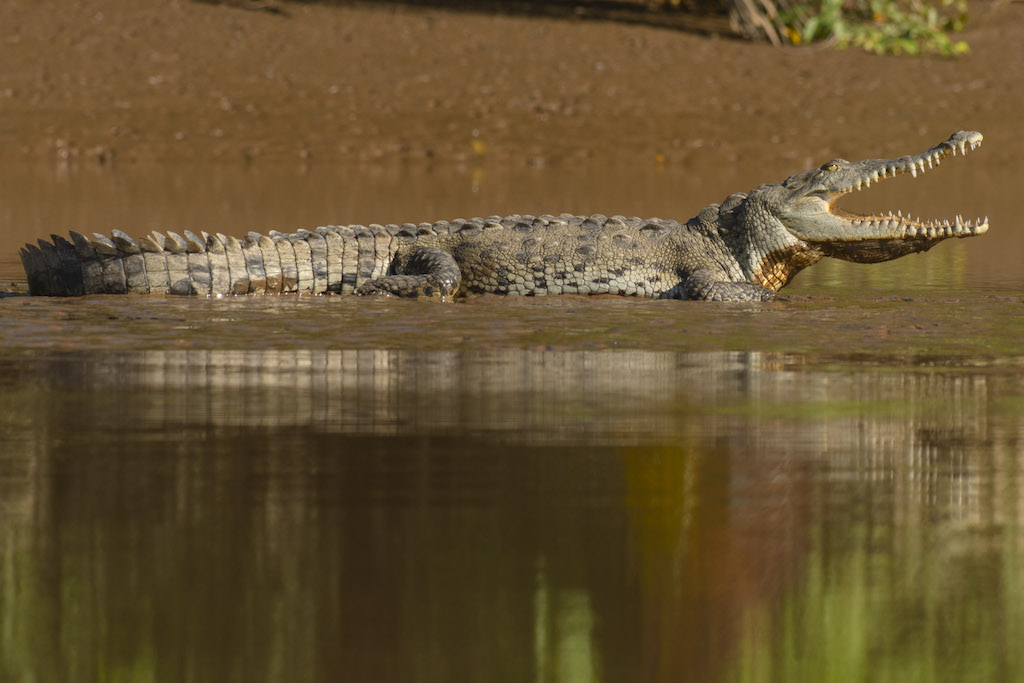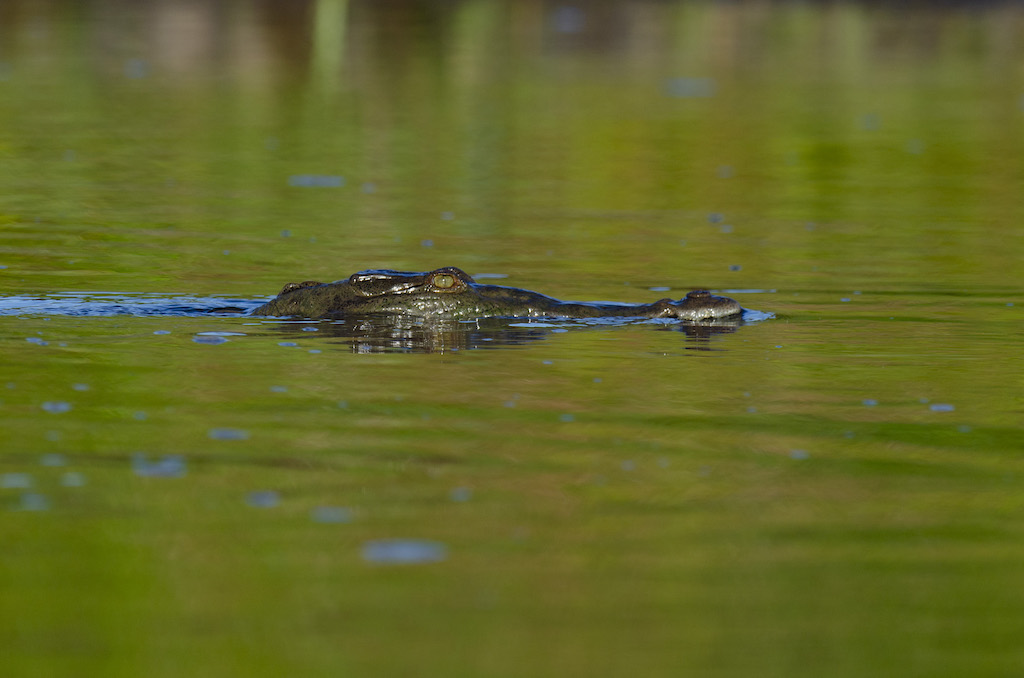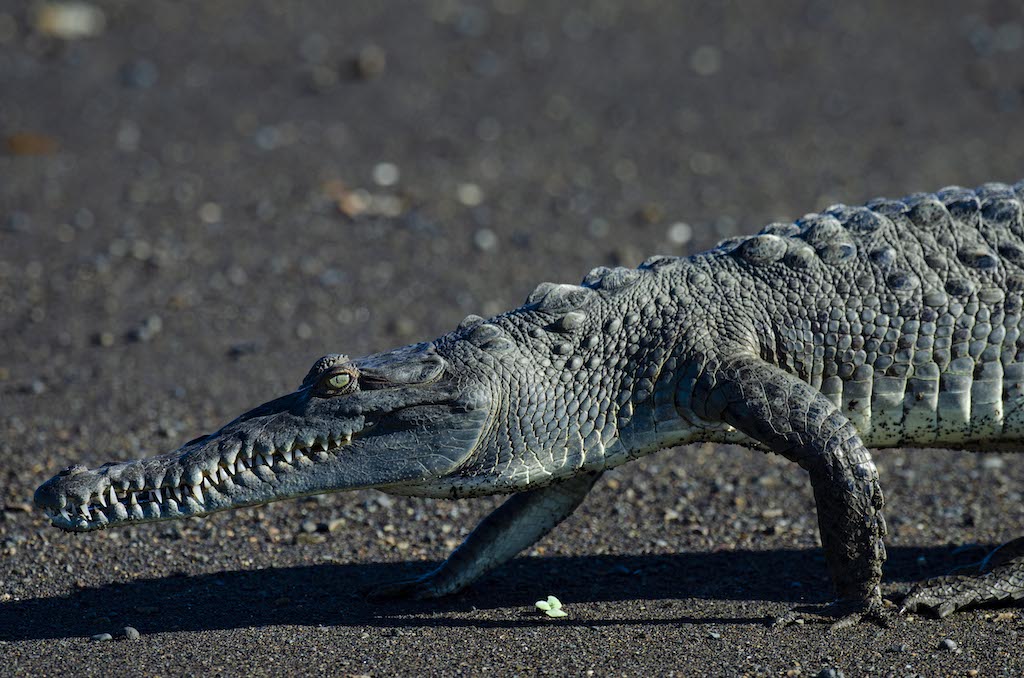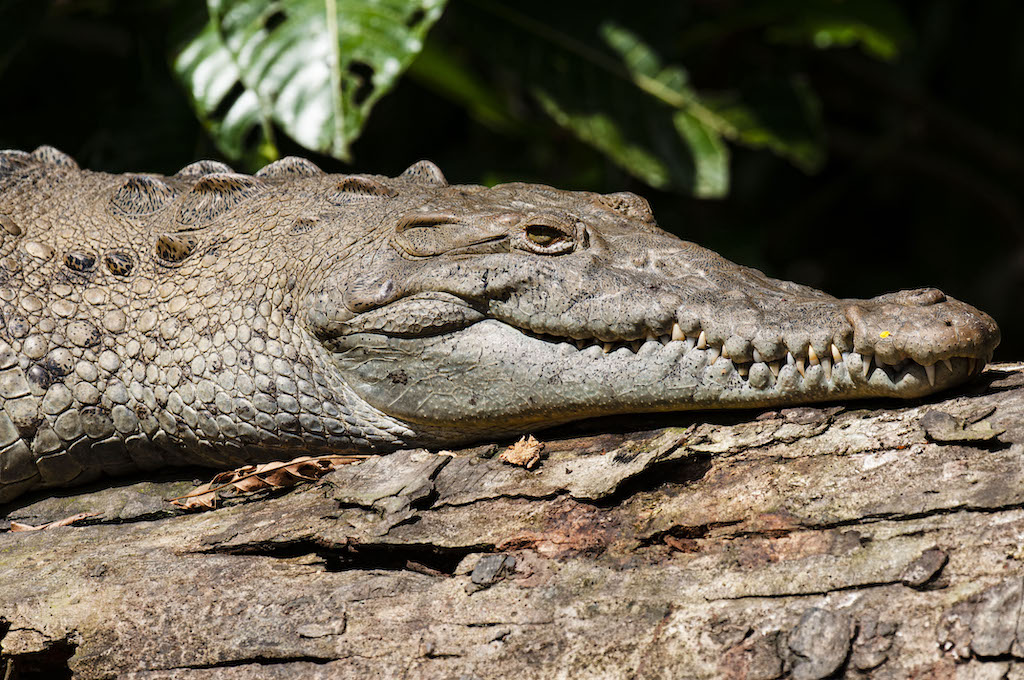
The American crocodile whose scientific name is Crocodylus acutus, It is distinguished by its large size, its back is grayish and the belly has no marks.

General Description.
With a total length of about 6 m in adults and generally between 3 and 4 m in juvenile. The male is larger than the female.
American crocodile average weight is 500 kg. The eyelids open and close laterally and are provided with glands that secrete excess salt through the eyes in the form of the famous “crocodile tears”, which is why they can live in both fresh and brackish waters and even enter the sea to colonize new territories.
Distribution of American Crocodile
It is distributed from Florida, some islands of the Caribbean Sea and coastal areas of the Gulf of Mexico (including the Yucatan peninsula), to rivers of the Caribbean coast of Honduras, Nicaragua, Costa Rica, Panama, Colombia and Venezuela; likewise, along the Pacific coast, from Mexico (from Sinaloa to Chiapas) to northern Peru. It inhabits permanent bodies of water such as coastal lagoons, estuaries and estuaries of rivers and streams, whose dominant vegetation are mangroves, reeds and other aquatic vegetation.

Behaviour and habitat
They are cold-blooded animals, therefore, they regulate their temperature from the temperature of the environment, their scales serve to absorb the heat from the sun; when sunning they remain still and to cool off they open their mouths or jump into the water. Their metabolism is slow, they can go long periods of time without eating and up to two hours without breathing.
It can be found in fresh, slightly brackish and salty waters. They are commonly found in coastal habitats, swamps, and mangroves. These areas are characterized by being deep, having a low wave action and their salinity is intermediate.
Feeding
Its diet is carnivorous, all kinds of invertebrates and vertebrates, including mammals that it hunts by surprise when they approach to drink water, the american crocodile can run for short distances so it can also kill its prey out of the water.
Reproduction
They mate before and during the rainy season, while spawning occurs in the dry season when beaches are formed on the margins of water bodies and after mating each female usually lays an average of 30 to 60 eggs, sometimes in shared nests. that they take care of until they hatch and after which the mothers dig up the little ones and lead them to the water.

Relationship with man
Its character is aggressive, as it does not hesitate to attack humans when invaded. They are nocturnal animals, dangerous in nature, do not hesitate to attack humans when invaded. Adult American crocodiles have no natural predators and almost all land or riparian animals are potential prey, opportunistic hunters.
American Crocodile Other data of interest
These predators are of great ecological importance, as they are found at the top of the food chain.
Due to the high commercial value of its skin, its populations were seriously depleted throughout its distribution during 1930–1970.
After the creation of international laws prohibiting its commercial exploitation, the main threat to the species has been the destruction and fragmentation of the habitat.
Mangrove Birding Journeys is an ecological company that take care of the american crocodile in Tarcoles River Costa Rica. For more information visit our home site.
https://bioweb.bio/faunaweb/reptiliaweb/FichaEspecie/Crocodylus%20acutus
https://es.wikipedia.org/wiki/Crocodylus_acutus
http://www.zoobioparqueamaru.com/nuestros-animales/animal.php?Id_Animal=82-cocodrilo-americano&Grupo=reptiles
https://www.barrameda.com.ar/animales-en-peligro/cocodrilo-americano/
